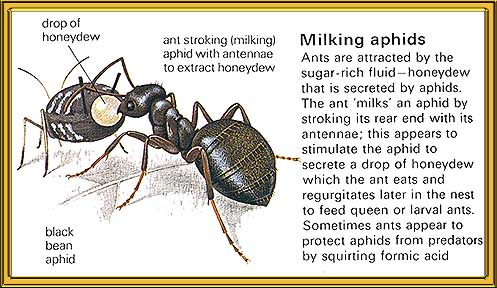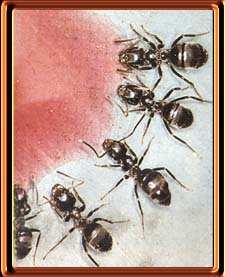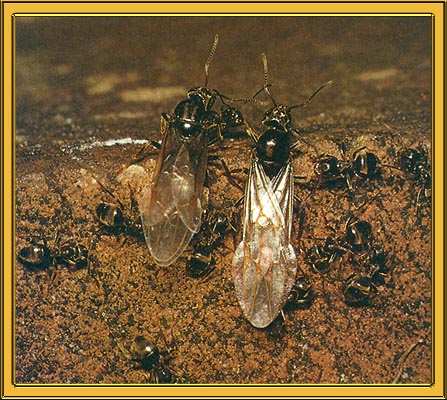
(Black ant or Garden ant)
This is the ant which everybody knows, the good old garden ant. It is found everywhere and no matter what you do, short of sterilising the ground which kills everything, you have just got to live with it. The queen can be as big as 15 mm but the worker or male is only 4 - 5 mm long. These are the flying ants which everybody associates with in middle to late summer (see above).
Ants frequently build their nests in the insulation layers of houses and from there they penetrate up into the house itself through the cracks which inevitably appear in the concrete and cement. Below is a picture showing garden ants burrowing up from the wall of a cellar, notice that they virtually separate the concrete into separate grains hence you end up with a pile of what is actually sand.
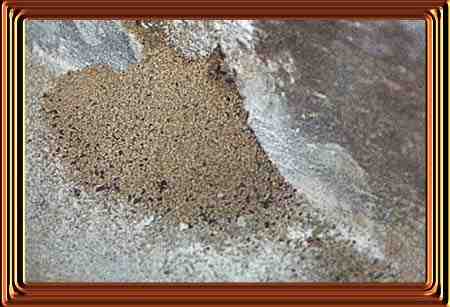
The workers in the nest carry out all the tasks required to keep the nest in good order and cleanliness. Below you can see one of the workers looking after the larvae and also the cocoons.
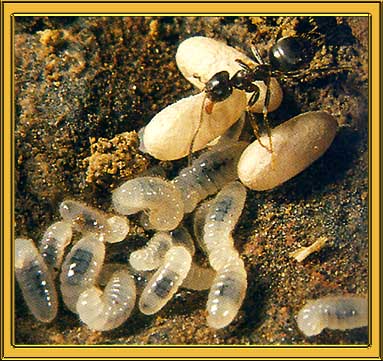
In nature these ants search for flower nectar and for what is poetically known as "honey dew"but which is actually a sticky, sweet secretion produced by aphids or greenfly. When garden ants get into the house it will soon be seen that they are particularly attracted to sweet substances, such as drops of jam or scraps of cake. As soon as one ant has found the food source, he then returns to the nest at the same time laying a pheromone(scent) trail, once back at the nest the ant can communicate with the other ants by tapping them with it's antennae and also by feeding them with some of the contents of it's crop. The next thing you know the whole nest is at the site where you dropped that jammy spoon. Below is a picture of some black ants around some spilt fruit juice.
There are various theories and observations about development times but here goes: egg to larvae about 21 days, larva to pupae about 12 days and pupae to immature adult: 53-54 days The immature adult to adult will take place over the next 3-4 days
So what can we do to control ants, well as I said before, in the garden, it is a thankless task because the amount of insecticide you would have to apply would not be very eco-friendly. In fact it would probably kill plants as well, apart from the fact that it would destroy insects which are crucial to the successful balance of the garden. Things like ladybirds and ground beetles all of which perform a natural function by predating on other species thereby keeping them under control.
But we don't really want ants running around the house and getting into everything. We can prevent this by barrier spraying around the house wall/floor junctions and also treating areas inside the house which already may have a problem. The trick is to treat areas with the minimum of insecticide, in fact just enough to do the job. Ideally, if the problem is bad, then call in a professional they have the correct types of insecticides for the job, they know how to use them, and apart from that you can't buy these products at the same strengths. A good trick is creosote painted around the house will help prevent entry of all types of insect as it is quite poisonous to them.
